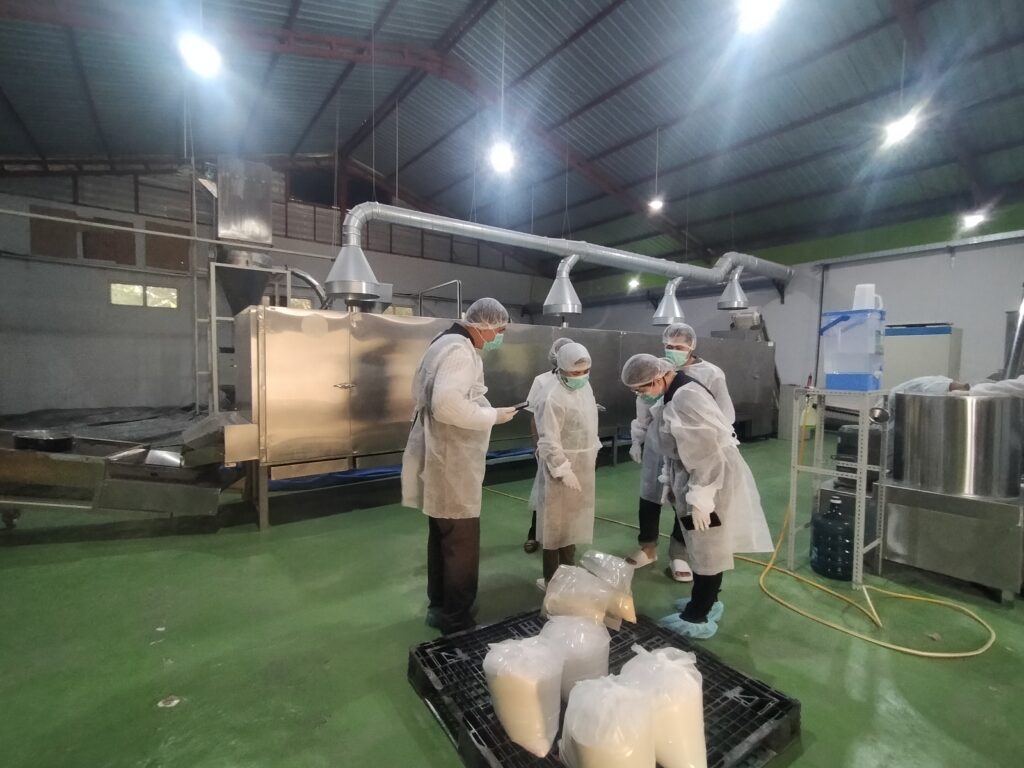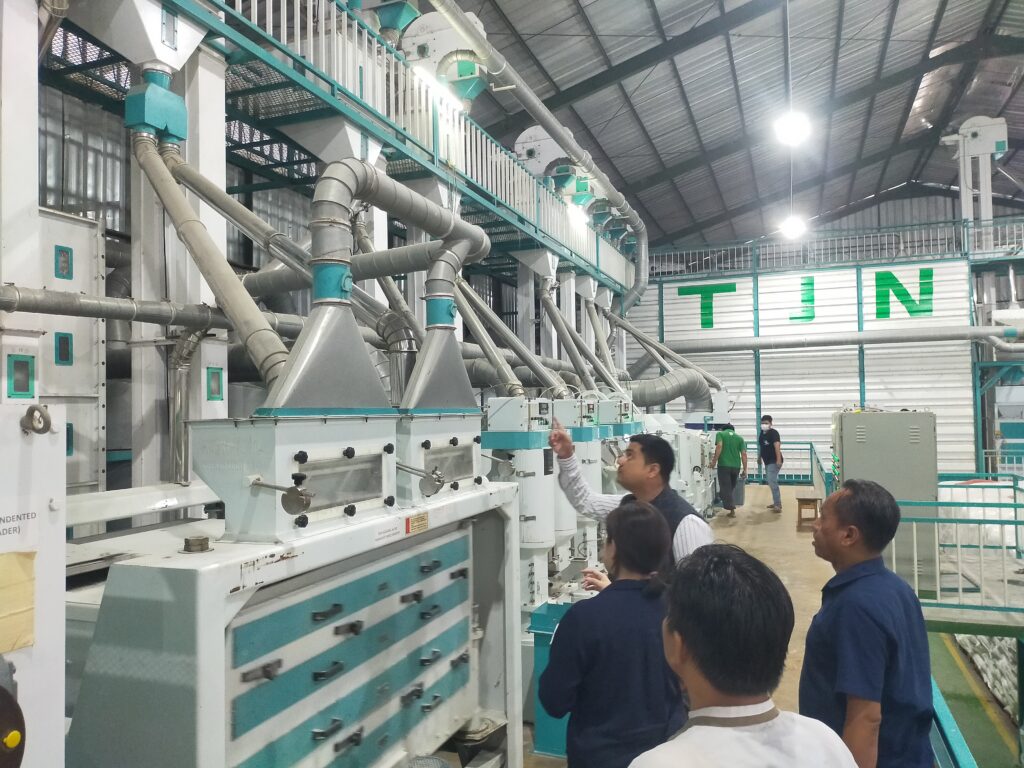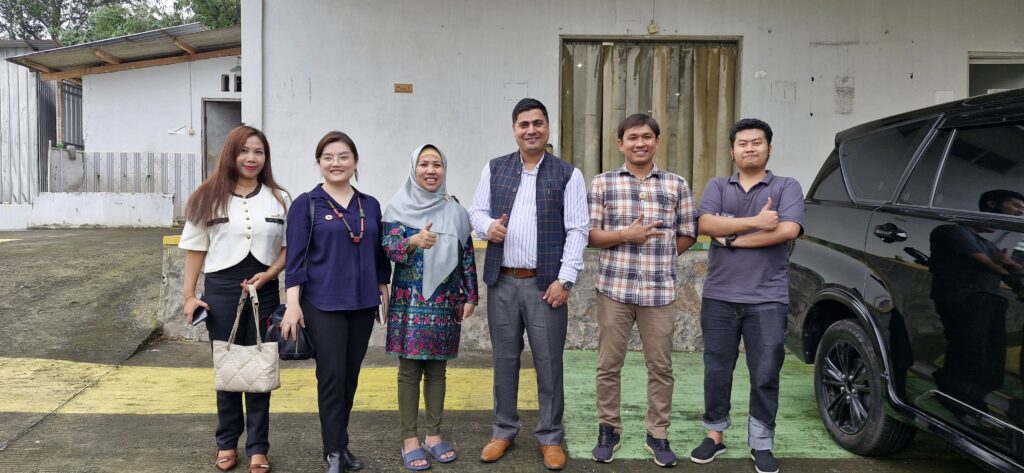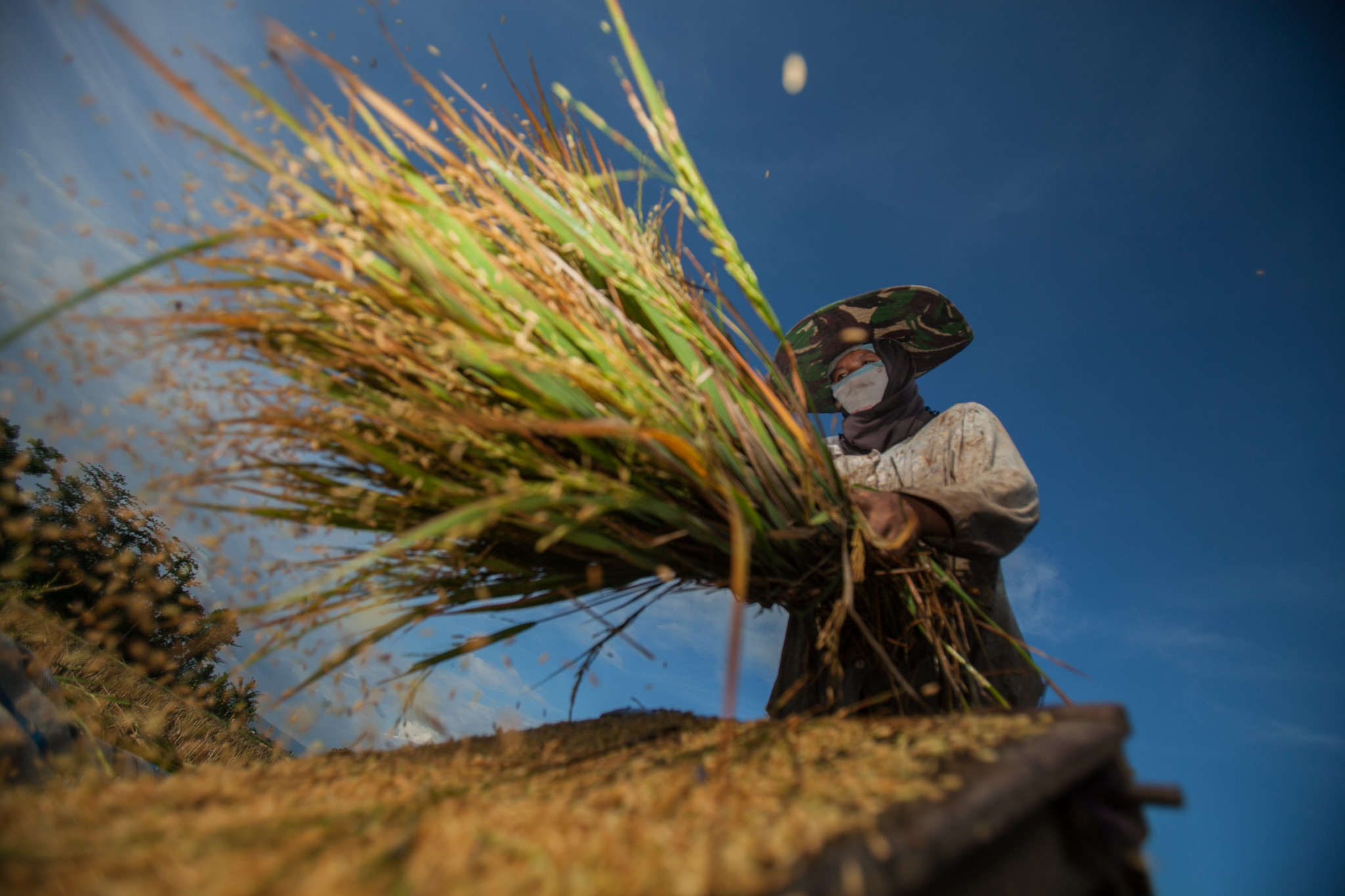
Strengthening Nutrition Through Food Fortification Programs in Asia
Cross-border collaboration between India and Indonesia is advancing food fortification efforts to turn the tide on malnutrition.

In a quiet milling facility in West Java, Indonesia, the hum of machinery paused for a moment as a small team gathered around a tray of rice grains. To most eyes, it looked like any other batch of rice. But this was no ordinary rice — it was fortified food, packed with essential micronutrients that could help prevent anemia, cognitive delays, and other malnutrition-related issues affecting millions across Asia.
Standing beside his Indonesian counterparts, Abhishek Shukla, Millers for Nutrition’s country program manager for India, was witnessing the culmination of months of preparation: a successful production trial of fortified rice kernels (FRK), made possible by knowledge shared across borders. This tangible example underscores Millers for Nutrition’s commitment to leveraging its expertise and network to address critical nutritional needs.
According to UNICEF Indonesia, 1 in 5 children under the age of five are stunted, 1 in 12 are wasted or too thin for their height and only 40% have access to a minimally acceptable diet required for optimal growth and development.
What is Millers for Nutrition? A Global Food Fortification Initiative
Millers for Nutrition is a dynamic global initiative dedicated to scaling up food fortification programs across eight countries in Asia and Africa. Recognizing the critical role of rice millers and other food processors in the food system and for ensuring food security, the initiative empowers these key players to produce and distribute nutrient-enriched foods.
Through technical assistance, knowledge sharing, and fostering collaboration, Millers for Nutrition aims to make safe and nutritious food more accessible to vulnerable populations. By highlighting the successes and challenges faced by millers and other partners through compelling storytelling, Millers for Nutrition amplifies the impact of food fortification and encourages wider adoption of these crucial practices.
Cross-Border Collaboration: How India and Indonesia Are Advancing Food Fortification

Abhishek’s visit to Indonesia exemplifies the power of cross-border learning in advancing food fortification. Working closely with Evelyn Djuwidja, Millers for Nutrition’s Indonesia program manager, Abhishek engaged in a series of activities designed to strengthen local capacity and foster innovation. Key moments of the visit included site visits to established FRK manufacturers and rice millers. These visits provided invaluable insights into existing production processes, quality control measures, and the challenges and opportunities unique to the Indonesian context.
The collaboration led to a joint review of a production pilot trial. This hands-on exercise allowed the team to test and refine FRK production techniques in a real-world setting, ensuring their adaptability and effectiveness. Furthermore, Abhishek shared standard operating procedures (SOPs) developed through Millers for Nutrition’s extensive experience in India, offering potential improvements in the production process of PT Thara Jaya Niaga, a key player in Indonesia’s fortified food manufacturing sector.
“The opportunity to witness first-hand the progress in Indonesia and to share our learnings from India has been incredibly valuable,” said Abhishek. “Peer learning across regions is crucial for building resilient and effective food fortification programs. By sharing best practices and adapting solutions to local contexts, we can collectively accelerate the fight against malnutrition in Asia.”
Case Study: PT Thara Jaya Niaga’s Role in Large-Scale Food Fortification
PT Thara Jaya Niaga stands as a testament to the transformative potential of embracing large-scale food fortification. As a leading FRK manufacturer and rice miller in Indonesia, the company has demonstrated a strong commitment to enhancing the nutritional value of rice. Through their collaboration with Millers for Nutrition, PT Thara Jaya Niaga has undergone a significant transformation. Notably, they have achieved a remarkable 50% cost reduction in their FRK production, making fortified rice more affordable and accessible. Furthermore, the partnership has led to improved SOPs, resulting in enhanced fortified foods product quality and consistency. This progress has significantly expanded PT Thara Jaya Niaga’s potential to serve low-income communities with nutritious rice, contributing directly to improved public health outcomes.
In a letter of appreciation, Diyan Anggraini, director of PT Thara Jaya Niaga, wrote, “Your expert guidance and technical support have been instrumental in streamlining our FRK production process and significantly reducing costs. This has not only improved our operational efficiency but has also strengthened our commitment to delivering high-quality nutrition to those who need it most.” This direct quote underscores the tangible benefits and the company’s dedication to fighting malnutrition.

Why Food Fortification Programs Are Crucial to Fight Malnutrition in Asia
The nutrition challenge across Asia remains significant, with millions of individuals, particularly women and children, suffering from debilitating micronutrient deficiencies such as iron, zinc, and vitamin A. These deficiencies can lead to anemia, impaired cognitive development, weakened immune systems, and increased susceptibility to illness. Given that rice is a staple food for a large proportion of the Asian population, fortifying it with essential nutrients presents a high-impact solution to address these widespread health issues.
Food fortification programs are crucial in Asia because they offer a cost-effective and scalable way to deliver essential nutrients to a large population through commonly consumed food. Consider the high prevalence of micronutrient deficiencies in the region and the potential of fortified staples like rice to bridge this nutritional gap.
Millers for Nutrition plays a vital role in helping local businesses develop the capacity to produce and distribute affordable, nutritious food options that meet stringent food safety standards and can be scaled up sustainably. These efforts align with government mandates and contribute to achieving global nutrition goals, including Sustainable Development Goal 2 – Zero Hunger.
Affordable fortified rice has the potential to improve health outcomes at scale, reaching even the most vulnerable populations. Millers for Nutrition’s contribution lies in providing the necessary technical and market-based support to local enterprises, ensuring the long-term viability and impact of these programs. While rice is a primary focus in Asia, globally, the fortification of other staple foods, such as edible oil, wheat flour, and maize flour has also proven effective in combating malnutrition.
Scaling Food Fortification Programs: Millers for Nutrition’s Next Steps
Looking ahead, Millers for Nutrition will focus on scaling the successful models developed in India and Indonesia across the wider Asian region. Upcoming initiatives include forging new partnerships with millers and food processors in other countries and establishing new pilot sites to demonstrate the feasibility and impact of food fortification programs.
The knowledge exchange between India and Indonesia will continue to be a cornerstone of this strategy, fostering a South-South collaborative ecosystem for advancing nutrition. The replicability of this model, which combines technical expertise, private sector engagement, and cross-border learning, holds immense promise for strengthening food systems and improving nutrition throughout Asia.
Support the Fight Against Malnutrition: How You Can Help
You can play a vital role in supporting the fight malnutrition in Asia:
- Stay Informed: Follow Millers for Nutrition (LinkedIn, Facebook, website) for updates on our work and the impact of fortified foods programs.
- Spread Awareness: Share this blog and other resources to raise awareness about the importance of fortified foods and the efforts being made to scale their production and distribution.
- Support Collaboration: Learn more about the critical role of private sector collaboration and initiatives like Millers for Nutrition in addressing malnutrition and consider supporting organizations working in this space.

FAQs
Frequently Asked Questions
What are food fortification programs?
These are initiatives that add essential micronutrients to staple foods like rice, edible oil, wheat, and maize flour to combat malnutrition and improve health.
What are the four main methods of food fortification?
The four main methods of food fortification include mass or large-scale fortification (for large populations), targeted fortification (for specific groups), market-driven fortification (driven by consumer demand), and biofortification (breeding nutrient-rich crops).
Is food fortification mandatory in Asia?
In countries like India, it is mandated for certain programs like publicly distributed rice. Other nations in Asia are increasingly moving toward supportive policies and recognizing the importance of fortification.
How much does rice fortification cost?
Costs vary depending on the technology and scale, but innovations like those implemented at PT Thara Jaya Niaga have demonstrated the potential to cut production costs by 50%, significantly improving the affordability and scalability of fortified rice.
What makes a food fortification program successful?
Clear government policies and standards, the availability of affordable and effective fortification technologies, strong private sector engagement, robust quality control measures, consumer awareness, and effective regional knowledge-sharing are all key factors.






